Burj Khalifa, formerly Burj Dubai, is an iconic architectural marvel in Dubai, United Arab Emirates. It currently holds the title of the world’s tallest building and structure. The famous architectural firm Skidmore, Owings, and Merrill LLP (SOM) designed the tower which is characterized by its contemporary and minimalist architectural style. The structural engineering principles, such as the buttressed core and high-performance concrete, set new standards for tall building construction. Burj Khalifa is a mixed-use development housing luxury residences, office spaces, entertainment amenities, and the first Armani Hotel. The tower’s design reflects Dubai’s cultural and contextual relevance, incorporating Islamic motifs, geometric patterns, and references to desert flora. Burj Khalifa has left a lasting impact on the architectural landscape of Dubai, influencing the design of other tall buildings in the city. The inspection and maintenance of critical infrastructure, such as electrical and mechanical systems distributed across its 160+ floors, demand skillful navigation of confined spaces. Burj Khalifa also complies with contemporary safety and accessibility standards, featuring robust fire and life safety systems and accommodations for accessibility throughout the building. The tower offers specialized guided tours for architects and architecture enthusiasts, providing technical insights into its design and engineering. Architects can draw valuable lessons from the Burj Khalifa’s design and construction, including the importance of innovative structural systems, interdisciplinary collaboration, advanced analyses, and adapting existing technologies to new purposes. As a city known for its architectural innovation, Dubai offers several other landmarks worth visiting, including the Dubai Frame, the Museum of the Future, and the Dubai Opera, all of which showcase cutting-edge design and engineering concepts.
What is Burj Khalifa?
The Burj Khalifa, known as the Burj Dubai before its inauguration in 2010, is a skyscraper in Dubai, United Arab Emirates. At 2,717 feet (828 meters) and with 163 floors, Burj Khalifa currently holds the record for being the tallest building and structure in the world. Construction began in 2004, with the structure’s exterior completed in 2009. The building officially opened in January 2010. The architectural firm Skidmore, Owings, and Merrill LLP (SOM) designed the tower. It is designed in a three-lobed footprint inspired by the flower Hymenocallis. The Y-shaped floor plan maximizes views and creates convenient partitions for mechanical services. Burj Khalifa utilizes a buttressed core structural system augmented by three wings with high-performance concrete construction. The building was named after Khalifa bin Zayed Al Nahyan, ruler of the United Arab Emirates. Burj Khalifa features luxury residences, office spaces, entertainment amenities, and the first Armani Hotel. The observation decks on levels 124, 125, and 148 provide 360-degree views over Dubai and the Arabian Gulf. Burj Khalifa utilizes high-tech building systems, including condensate recovery, water-cooled air conditioning, and a pumping system that moves concrete to higher floors. The tower also features sustainable and green building principles such as water conservation and energy efficiency.
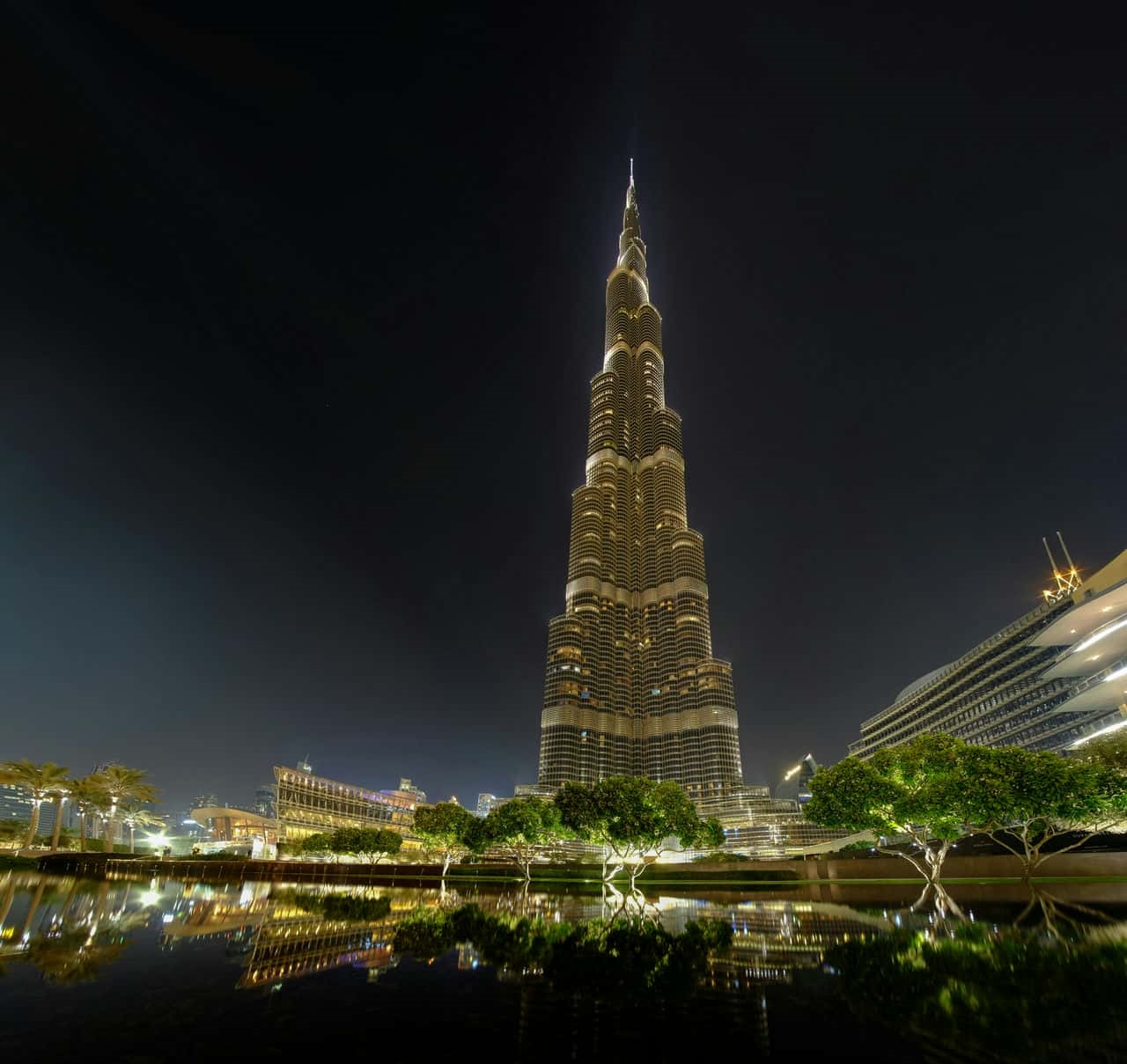
What architectural style is most prominent in Burj Khalifa?
The most prominent architectural style in Burj Khalifa is contemporary or modern architecture. It displays minimal ornamentation on the building’s surface and instead focuses on advanced structural engineering techniques and complex geometric forms. The building integrates modern architectural principles such as minimalism, efficiency, sustainability, and innovation in high-rise construction. It uses simple reflective glazing and lacks external projections, instead emphasizing the height and verticality of the structure. The smooth stainless steel spire at the building’s pinnacle is also a modern design feature. Burj Khalifa’s three-petal footprint draws inspiration from traditional Islamic architecture.
What structural engineering principles are employed in the construction of Burj Khalifa?
The Burj Khalifa used several structural engineering techniques to support its record-setting height. Firstly, the robust buttressed core structural system. The tower has a hexagonal central reinforced concrete core that provides stability. This core is bolstered by three wings with their concrete cores and perimeter columns. As the building height increases, the wings are set back in a spiraling pattern. This allows the building shape to change at each tier, reducing wind forces. Secondly, setting back the branches enabled the construction of one of the world’s tallest reinforced concrete buildings. The spiral design showcases the modernity of Burj Khalifa’s form.
Lastly, high-performance concrete was explicitly developed for Burj Khalifa, allowing quicker construction. As concrete cures, it releases heat, which can cause cracking, so cooling pipes are embedded in the concrete mix. The central core emerges at the top and transitions into a structural spire. The spire uses a diagonally braced lateral system and reinforced concrete main shaft. The spire was assembled inside the building and jacked to its full height of over 700 feet (213 meters) using a hydraulic pump system.
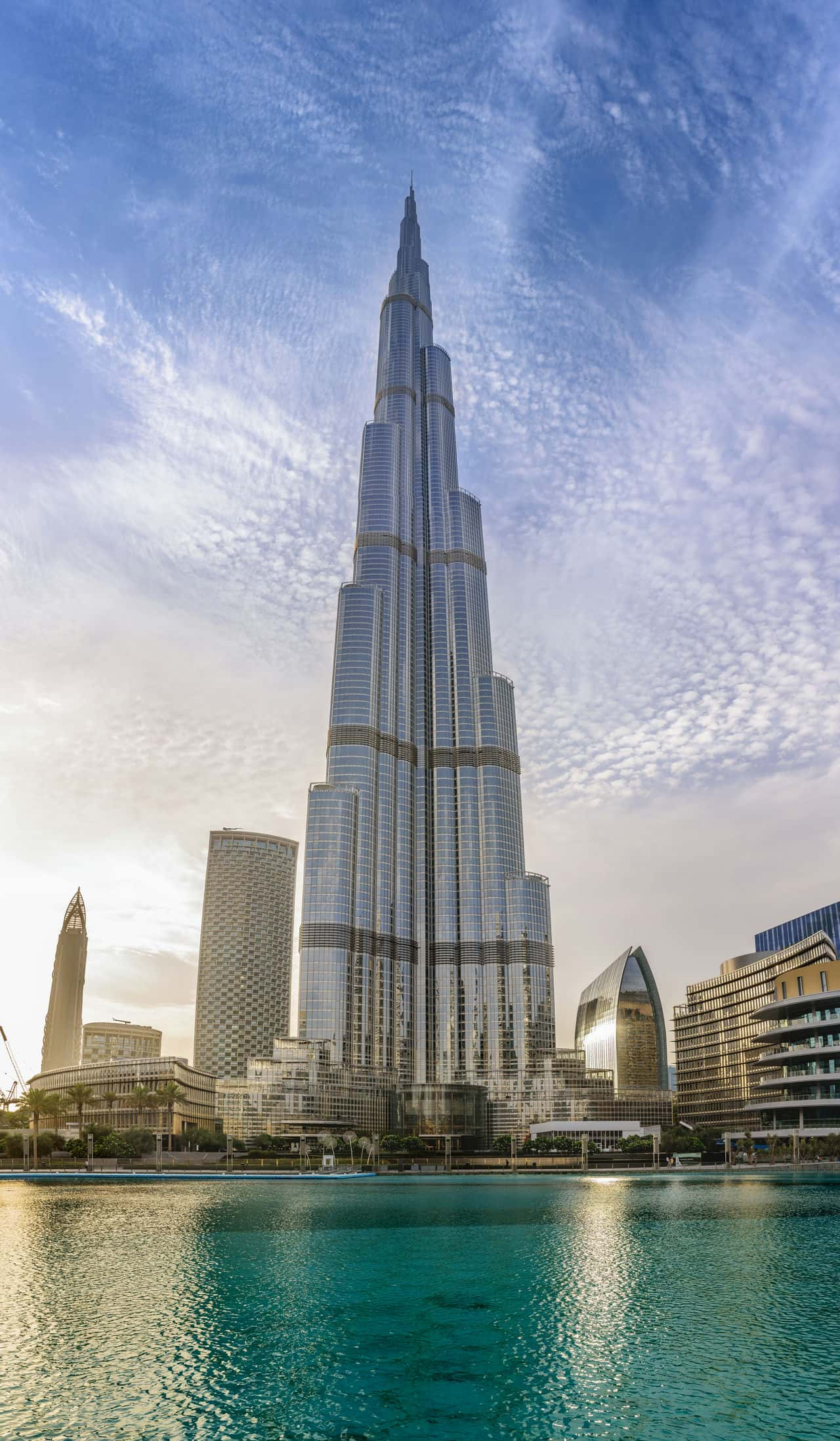
Who designed the Burj Khalifa?
The Burj Khalifa was designed by the architectural firm Skidmore, Owings, and Merrill LLP (SOM), which has pioneered the world’s tallest buildings. The specific architects were Adrian Smith, the chief architect who handled the overall building design, and George Efstathiou, the project designer. The structural engineering partner was William F. Baker. The initial conceptual design was by Adrian Smith based on the client’s request for a record-setting tall structure. Smith had previously worked on many supertall buildings at SOM. His experience enabled the creation of the tri-lobed Y-shaped plan, which resists wind forces.
Smith moved to his firm during construction and was replaced as chief architect by George Efstathiou in 2006. So, while Adrian Smith’s conceptual designs were crucial, Efstathiou oversaw the tower’s later technical development and completion. Structural engineer Bill Baker helped realize the buttressed core structural scheme enabling the tower’s height. His expertise in supertall buildings was vital for the project through coordinating the architectural and engineering aspects.
What are the historical design influences visible in Burj Khalifa?
The Burj Khalifa incorporates design influences from Islamic architecture, which is evident in its various features. Firstly, the tower’s three-lobed footprint, for instance, is inspired by the flower of Hymenocallis, which has symbolic meaning in Islam associated with the desert. This shape is reflected in the tower’s design and is intended to echo the geometry of traditional Islamic motifs. The geometric patterns incorporated in the tower’s cladding system are also inspired by classic Islamic art and architecture, referencing historical decorative motifs. Secondly, the tower’s shape is another historical design influence visible in the Burj Khalifa and is inspired by Islamic architecture. It echoes the spiral minarets of historical Islamic structures, which were used to call Muslims to prayer. Lastly, the Y-shaped floor plan of the Burj Khalifa is yet another design feature that draws from traditional Islamic architecture. The wings of the building extend from a central core, similar to some vital Islamic monuments, allowing maximum outward views and natural lighting within the interior spaces. This innovative floor plate design showcases modern engineering while respecting Islamic architectural principles.
How has the Burj Khalifa influenced the design of other buildings in Dubai?
The Burj Khalifa significantly influences Dubai’s skyline and the design of other tall buildings in the city. Its 2,716 feet (828 meters) record-breaking height set a new standard for supertall skyscrapers, pushing the boundaries of engineering and architectural design. This structural design has inspired other towers in Dubai, such as the Marina 101 and Cayan Tower, which also utilize setbacks and reinforced concrete. The building’s distinctive Y-shaped plan, drawing inspiration from regional Islamic architecture, provides stability and good views. Other towers in Dubai have adopted similar multi-lobed footprints, like the twisted Cayan Tower and the triple-lobed Marina 101. The pointed spire design topping the Burj has also influenced spires and crowns on other buildings in Dubai. The Burj Khalifa’s extensive use of glass for the exterior wall system has become a model for other skyscrapers in the Gulf region. The Dubai Frame and Museum of the Future feature similar advanced curtain wall designs. Sustainability has also been a significant influence. This innovative water efficiency system has become a standard in Dubai for other important developments. The Burj Khalifa also utilizes solar power, encouraging the broader adoption of renewables.
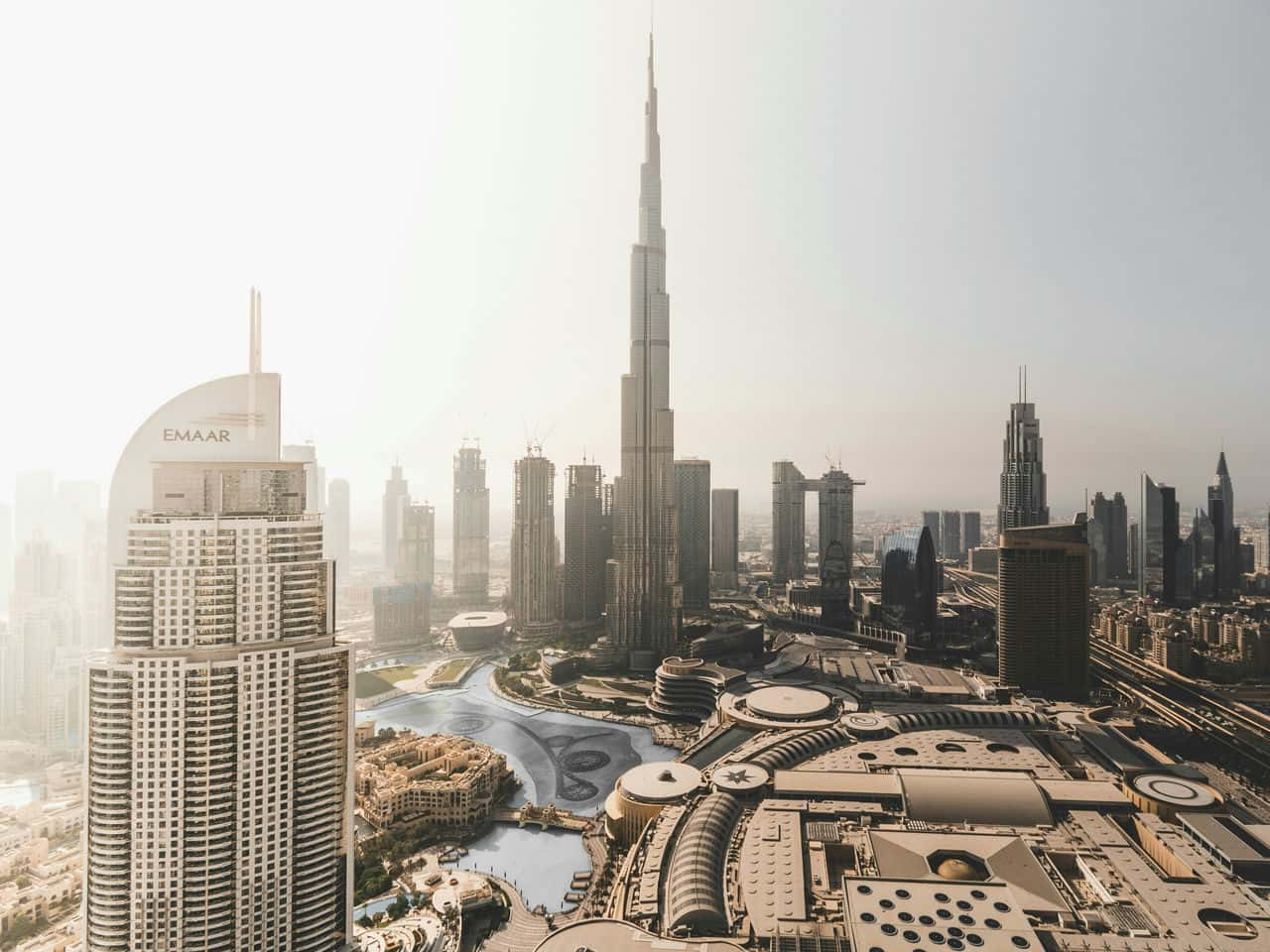
What purpose does the Burj Khalifa serve, and how does the design help?
The Burj Khalifa serves multiple purposes as a mixed-use development, and its design helps achieve high performance in Dubai’s extreme desert climate. The 162-story Burj Khalifa contains offices, retail space, residential units, and an Armani Hotel. Its Y-shaped floor plan maximizes views of the Arabian Gulf for occupants. At ground level, the skyscraper is surrounded by green space, water features, and pedestrian-friendly areas to create an inviting urban environment. The design draws inspiration from Islamic architecture and a desert flower native to the region. Built of reinforced concrete and clad in glass, the tower comprises sculpted volumes arranged around a buttressed central core. Upward setbacks in a spiraling pattern reduce the building’s mass as it reaches skyward. The tapered shape helps minimize wind forces and the effects of vortex shedding.
How is the Burj Khalifa maintained?
The skyscraper’s facade comprises over 26,000 glass panels that must be regularly cleaned. Automated guided vehicles equipped with long cleaning arms glide along the building’s exterior tracks to wash the reflective glass and free it from dust blown in from the desert. Teams also inspect for any cracks or damage in the panels from extreme heat, winds, sand erosion, or impacts from the tower’s daily light shows. Equipment such as pumps, tanks, valves, and miles of piping and cabling must be continually monitored, serviced, and upgraded when needed. The fire and life safety system incorporates smoke detectors, sprinklers, fire pumps, dedicated fire refuge floors, and evacuation routes. The skyscraper has an advanced building management system with thousands of sensors and automated controls to optimize performance. Any fluctuations trigger alerts for rapid investigation and correction by facilities staff. Periodic testing ensures emergency systems will function if ever needed. The latest technologies, strict preventative maintenance protocols, and round-the-clock diligence by skilled personnel keep this structure running safely and efficiently year after year.
How does Burj Khalifa reflect cultural and contextual relevance in their design?
The design of the Burj Khalifa skillfully balances global ambitions with cultural and contextual relevance to its location in Dubai. The form of the building draws direct inspiration from Islamic architecture and a desert flower native to the United Arab Emirates called the Hymenocallis. The tower rises from a flat base with setbacks in an upward spiraling pattern, evocative of the Hymenocallis flower. This stepping also reduces the building’s mass and higher exposure to wind forces. The central core emerges at the top and culminates in a slender spire, anchoring the Burj Khalifa on the Dubai skyline. The tower’s facade patterns echo ornate Islamic screens and latticework found throughout the region in materials like stone, wood, and metal. The Burj Khalifa translates cultural design elements into a contemporary context by reinterpreting this delicate glass and stainless steel aesthetic. The decision to enclose the tower’s podium in glass also references regional architecture. Historic buildings in Arabia often incorporate interior courtyards, which inform the design of the verdant parks, boulevards, and water features surrounding the Burj Khalifa at ground level. This helps connect residents and visitors to the desert landscape.
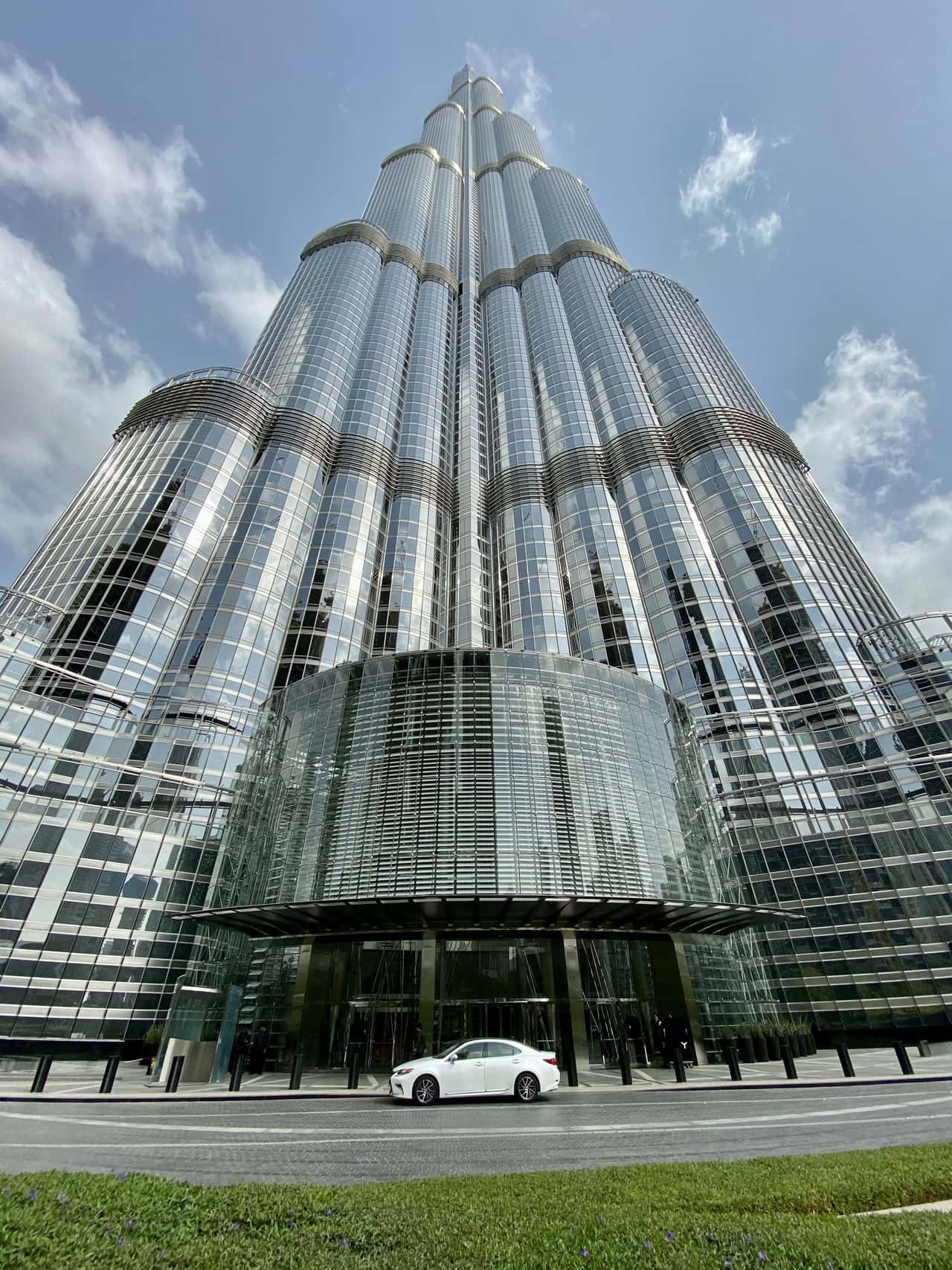
What architectural trend or movement does the Burj Khalifa represent?
The Burj Khalifa represents the trend towards ever-taller skyscrapers and pushing the boundaries of engineering and architecture. The Burj Khalifa claimed the title of the tallest building and free-standing structure worldwide. The building epitomizes the ambitions of its location – Dubai – to erect eye-catching architecture on an unprecedented scale. The structure utilizes innovative building techniques like the buttressed core, described as a “virtual second skin,” to provide stability. Architecturally, it combines cultural influences like Islamic patterns with modern materials like glass and steel. The Burj Khalifa broke world records and required innovative equipment, construction techniques, and material tests to reach such heights. Its construction showcases humankind’s ability to overcome enormous technical and engineering challenges. The structure represents the quest for architectural superlatives – to build taller and more dramatically than ever. The building even has the world’s highest outdoor observation deck, signifying its intention to break records directly and catalyze tourism. Burj Khalifa is unprecedented today, it will likely be surpassed by even more extreme projects in the coming decades as this trend continues. Burj Khalifa encapsulates the ambitions of the 21st century to test the boundaries of constructability and human ingenuity.
What are the challenges faced during the restoration of Burj Khalifa?
The iconic Burj Khalifa in Dubai requires extensive and challenging restoration work to maintain its structural integrity and appearance. Firstly, accessing the exterior façade and windows for cleaning and repairs. Given the building’s extreme height and tapered shape, suspended platform systems must be specially designed and constructed to enable workers to access all areas safely. Secondly, the building’s intricate, hand-cut glass and metal exterior cladding. The 26,000 glass panels alone require tremendous coordination and time to clean systematically. Any cracked or broken panes must be replaced with precise, customized components to conform to the building’s sophisticated curtain wall system. Lastly, maintaining vital infrastructure like electrical, mechanical, and plumbing systems distributed across over 160 floors poses logistical hurdles. Teams must skillfully navigate extremely confined mechanical spaces never designed for heavy maintenance work. Critical equipment like enormous central air handling units may require disassembly before removal. The tower’s structural health monitoring systems provide invaluable real-time data to inform restoration efforts.
How does Burj Khalifa comply with contemporary safety and accessibility standards?
Burj Khalifa required innovative life safety systems to comply with safety codes and accessibility standards. Firstly, its three-wing Y-shaped floorplan optimizes emergency egress, with multiple protected fire stairs from the tip to the base. Enhanced fire insulation and partitions compartmentalize each wing and the central core. Secondly, the tower meets fire and life safety objectives through numerous active and passive features. Robust fire detection and alarm systems, plus redundant water supply lines, augment the robust compartmentalization. Thermal imaging cameras help firefighters visualize interior conditions. Lastly, the tower meets accessibility mandates through accommodations like tactile wayfinding floor finishes and Braille signage. Low-rise building sections feature gently sloped walkways. Granting universal access to such an extreme structure does pose unique challenges. For example, the 124th-floor observation deck would generally require an interim wheelchair transfer point partway up. Burj Khalifa’s advanced elevator system eliminates this burden; one route serves lower than 123, while another set continues nonstop to the 124th floor.
Are there any specific tours for architects or architecture enthusiasts visiting Burj Khalifa?
Yes, Burj Khalifa offers guided tours tailored to design professionals and tall building enthusiasts seeking more technical insights. Two programs in particular cater for the Architectural Tour and the Structural Tour. Architectural Tour focuses on site design, spatial planning, and geometric massing. The Structural Engineering Tour offers a supplementary perspective on the tower’s robust buttressed core load transfer system.
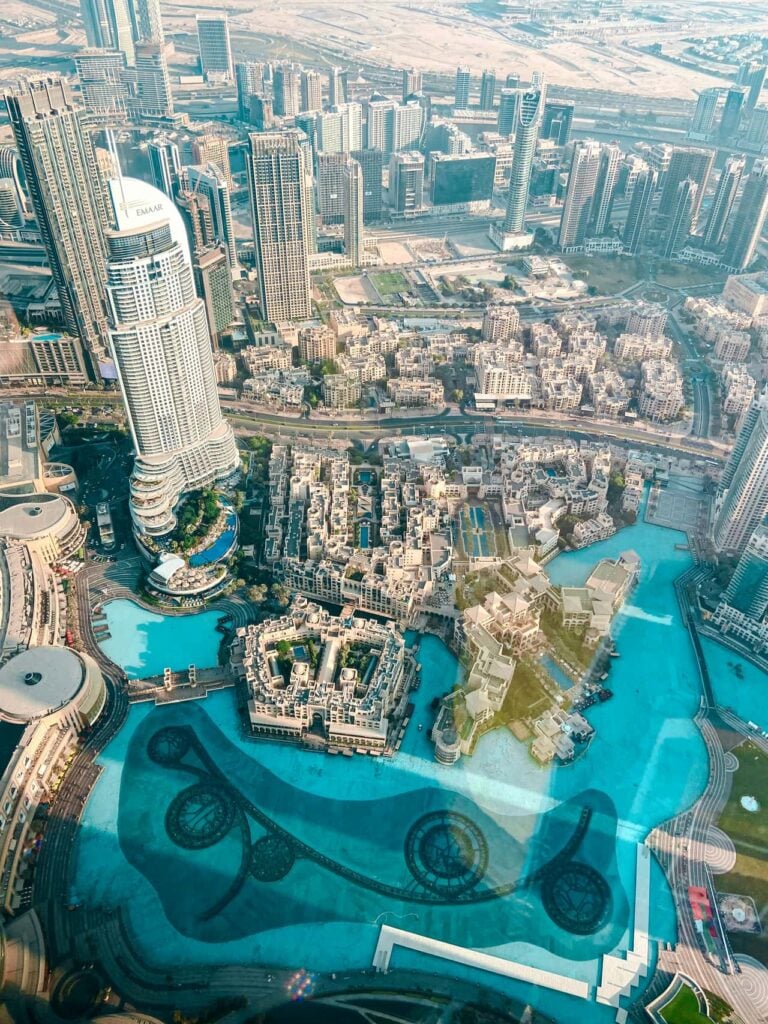
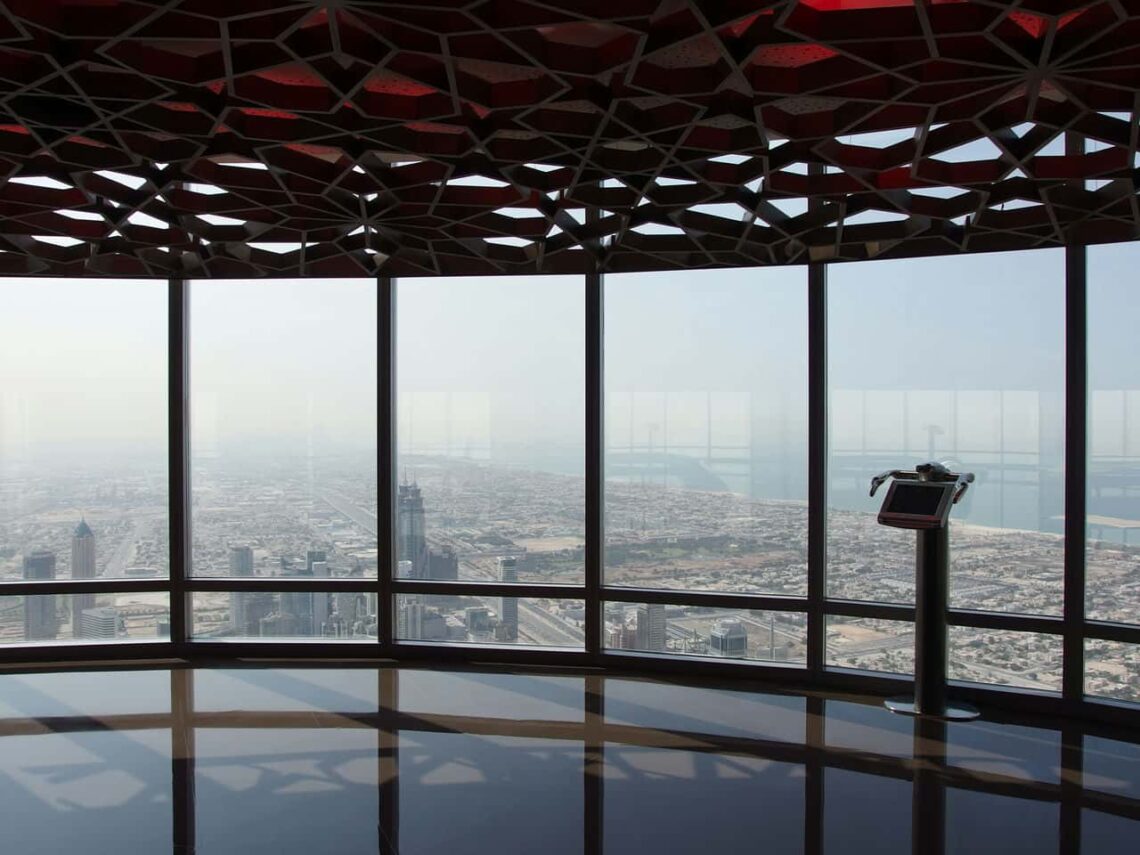
What lessons can architects learn from the design and construction of the Burj Khalifa?
Architects can learn key lessons from the Burj Khalifa’s design and construction. Firstly, The Burj Khalifa pushes height limits through innovative structural systems like the buttressed core. Architects can apply similar stepping forms to resist lateral forces. Secondly, the process behind the Burj Khalifa shows the value of extensive collaboration between architects, engineers, builders, and other consultants throughout the project timeline. Architects should foster this cross-disciplinary teamwork and communication on ambitious buildings. Thirdly, advanced analyses were instrumental, including wind tunnel testing and computer modeling of the structure under dynamic loads. Architects can proactively leverage similar simulations to predict and address problems, optimizing constructability. Lastly, the foundation design overcame site conditions by anchoring the tower through heterogeneous soil layers to bedrock. Architectural projects likewise rely on innovating structural solutions that respond to local contexts. Architects can gain inspiration from identifying ways to adapt existing technologies to new purposes rather than constantly seeking new technologies.
What are the best architectural landmarks in Dubai to visit as an architect?
The best architectural landmarks in Dubai to visit as an architect are:
- Burj Khalifa: Burj Khalifa is a must-visit for architects studying skyscraper engineering and design. Completed in 2010 and designed by Adrian Smith of Skidmore, Owings & Merrill, it stands at 2,716 feet (828 meters). The building’s design is inspired by Islamic architecture and incorporates cutting-edge wind and seismic engineering technologies. Its Y-shaped plan maximizes views and increases the building’s stability. The Burj Khalifa represents a monumental achievement in high-rise architecture and is a symbol of Dubai’s urban ambition.
- Palm Jumeirah: Palm Jumeirah, a man-made archipelago, is significant for architects interested in large-scale urban planning and environmental engineering. Created using land reclamation, it extends into the Persian Gulf in the shape of a palm tree. The project, completed in 2006, includes residential, leisure, and entertainment centers. It is an extraordinary example of human ingenuity in creating new urban spaces and redefining the coastline.
- Dubai Frame: The Dubai Frame, completed in 2018, offers architects a study in symbolic architecture and urban framing. Designed by Fernando Donis, it forms a literal frame through which viewers can observe the city’s past and present. The design represents a metaphorical bridge between old and new Dubai, making it a unique architectural landmark that offers both visual and conceptual intrigue.
- Burj Al Arab: The Burj Al Arab, designed by Tom Wright of WKK Architects and opened in 1999, is important for architects exploring luxury hotel design and innovative structural systems. The hotel stands on an artificial island and is connected to the mainland by a curving bridge. Its distinctive form and opulent interiors set a new standard for luxury hospitality design, and its use of a V-shaped concrete frame for wind resistance is an engineering marvel.
- Cayan Tower: Cayan Tower, known for its helical design, is a building for architects interested in dynamic form and structural innovation. Completed in 2013 and designed by Skidmore, Owings & Merrill, the 1,005-foot (306-meter) tall tower rotates 90 degrees from base to top. This twisting shape reduces wind forces and provides unique perspectives of the city and the Persian Gulf, making it a standout example of contemporary high-rise design.
- The Opus by Zaha Hadid: The Opus, designed by the late Zaha Hadid, is a key destination for architects studying deconstructivist architecture and fluid forms. Completed in 2020, the building features a free-form void at its heart, wrapped by a cuboid glass façade. The design blurs the lines between structural form and space, offering a take on office and hotel architecture.
- Dubai Opera: Dubai Opera, opened in 2016 and designed by Janus Rostock of Atkins, is important for architects examining contemporary cultural architecture. Shaped like a traditional dhow, the building is a multi-format performing arts center. Its transformable interior can shift from a theater to a concert hall or a banquet hall, showcasing innovation in adaptable architectural design for cultural spaces.
- Museum of the Future: The Museum of the Future, a landmark project for architects interested in sustainable construction, was opened in 2022. Designed by Shaun Killa, its torus shape symbolizes humanity, the earth, and the unknown future. With Arabic calligraphy, the building’s stainless steel façade incorporates solar panels, making it an example of integrating renewable energy into cutting-edge architectural design. The museum’s focus on the future of science, technology, and innovation makes it a hub for forward-thinking architectural practice.


